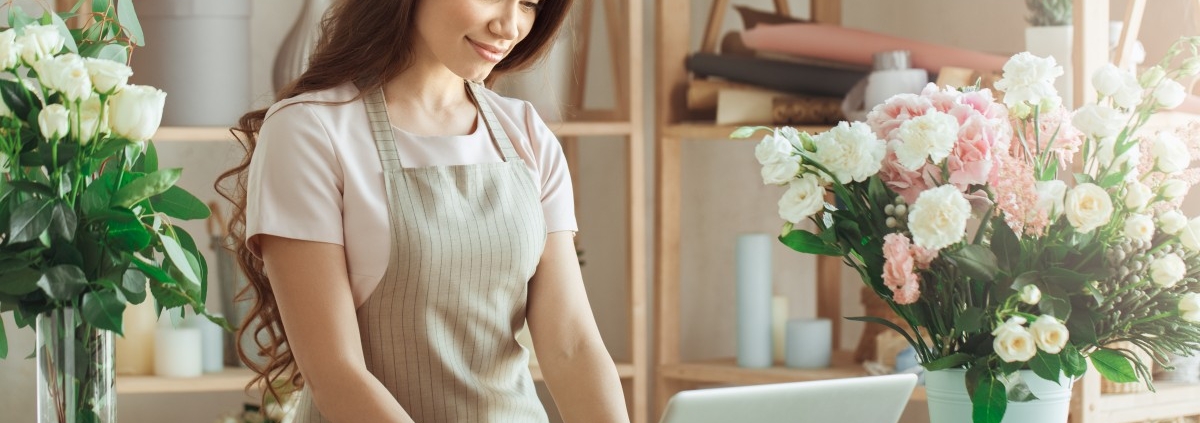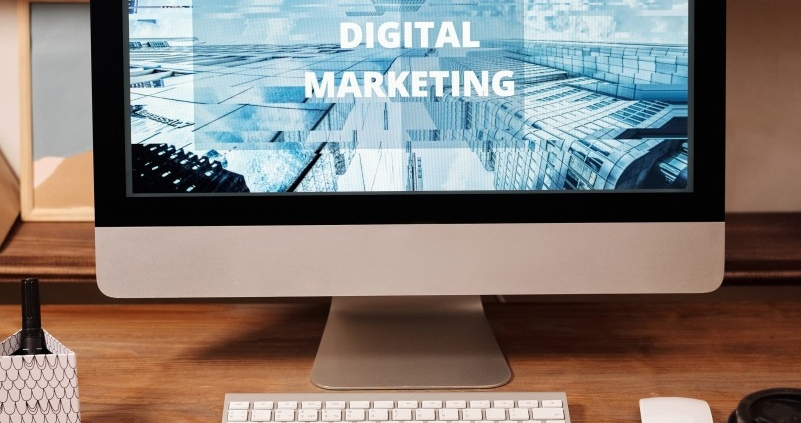Tips for Floral Professionals: How to Send Better Emails
Picture this – if Instagram, Facebook, and other social media sites disappeared tomorrow, how would you reach your customers?
In today’s digital age, you cannot afford to put all your eggs in one basket. It’s great that you spend a lot of time managing and growing your social media channels, but ultimately you do NOT own your audience on any of them.
Year after year, organic engagement is declining and your beautiful, well-crafted content is being seen by fewer people. We are quickly reaching the point where any type of post is “pay to play” if you want your audience to even see it.
This is where having direct ownership of your audience is key. Your marketing plan should always include a strategy for building a marketing list that consists of your customers, prospects, partners, referrers, and followers. Collecting these opt-ins allows you to have direct communication with your list.
Did you know that your message is 5x more likely to be seen in an email rather than over Facebook or Instagram?
In this blog, we cover the best practices for email marketing in the floral industry.
Benefits of email marketing
- High visibility: for a good-quality email list, deliverability rates reach 85% of the people you send it to, and open rate can vary from 15-50% depending on several factors.
- Profits > Likes: data shows that about 66% of consumers will purchase something directly from an email, which means email drives profits for your business, not Instagram likes.
- Personalized content: many email services allow you to segment the list to send highlight targeted messaging specific to that segment of the audience, while on social media your posts are catered to all.
- Brand recognition: email templates allow you to have a consistent look and feel for your email communication where on social media, pretty pictures get lost in the never-ending scroll. You can better differentiate your business via email and build consistency that makes your subscribers anticipate your incoming communication.
Low Cost: once someone chooses to opt-in to receive your emails, you are not spending any more money on trying to reach them. There are free apps and tools which we will cover below for you to communicate with this subscriber for as long as they stay subscribed.
How to organize your emails marketing:
Step 1: Pick the best email service for your floral business
It’s important that you pick the email service that best suits the needs of your business.
If you are just getting started, it’s a safe bet to go with Mailchimp.com. It’s FREE for up to 2,000 subscribers and has the best basics features on the market. You can send a monthly newsletter, a promotional blast and even a welcome drip sequence using this tool
But if you already have a large customer list and are looking to get serious with targeted email marketing, there are better, more customizable email tools out there, including Klaviyo, Drip, Convert Kit, Infusion Soft, etc. On top of what Mailchimp provides, these services also have multi-channel automation, powerful list segmentation, behavior and event tracking, customer insights, flexible API, a learning hub, superior customer support and integrations with e-commerce and social media platforms for an omni-channel approach to your marketing. The monthly costs for these tools vary greatly
Step 2: Plan out the types of campaigns you want to have
There are many types of emails you can send depending on the content and audience segment. You do not need to do all of them, but check out the common options to see which would serve your floral business best.
- Promotional: communicate special offers and sales you may be running, any cool opportunities for your subscribers – like giveaways, partner offers, upcoming events, masterclasses, workshops, etc.
- Holiday greetings: a great and easy touchpoint to wish your subscribers a happy holiday and to refresh their minds about what your product or service. You can also mention a deadline to place orders for the specific holiday. It’s a great, non-intrusive way to stay in touch.
- Newsletters: a great monthly or even weekly general communication type of emails to keep your followers up to speed on cool brand news, share blogs you’ve written, tease upcoming projects and updates, give heads up about future sales, share press highlights and anything that gives your subscribers a unique glimpse into your brand.
- Automated or Drip Campaigns: series of emails that are sent automatically when triggered by actions done by your subscribers.
There are various types of drip campaigns you should consider:
- Welcome Drip: when someone opt-in, you can automatically add them to your welcome sequence which can send 2-3 emails to tell the new subscriber about your brand story, values, products/services, social media/youtube, etc.
- Nurturing/Remarketing: a sequence that allows you to “remind” your customer about your service or product they recently looked at. For example, if you have a Floral Masterclass, you can retarget anyone who previously subscribed to “workshops” updates on your list, then continue to communicate with them if they keep engaging until they purchase/signup.
- Abandoned cart: someone added your product/service to cart but didn’t check out? This sequence can send them highly targeted emails showing the exact product they looked at and reminding them that it will remain in the cart for them for a few more hours. These mails create urgency.
- Re-Engagement: have a porting of your subscribers who never open your emails. You can target them with a special campaign that gets them to re-engage with your brand. It requires a catchy subject line and some valuable content for them to check out (see what you missed!)
- Special occasion: automating “happy birthday” and anniversary blasts are great ways to build lasting relationships with your subscribers. You set it up once and they keep sending automatically and making your subscribers feel special.
Step 3: Create an email template
Once you sign up for an email tool and determine which campaigns you want to send, spend a bit of time on making them look great. You do not need to know how to code or even be proficient at graphic design.
Most email products already come with easy to customize templates that allow you to quickly drop your logo, select your colors and fonts, and build the optimal layout you desire.
Consider your visuals – you should have photos and or videos in your emails to make them more visually appealing and modern. Mailchimp and other tools we suggested above allow you to accomplish this in seconds.
Don’t forget to add a link to your contact info, website and social media channels somewhere in the email to make it easy for your subscribers to connect with you after they get your email.
Step 4: Build and segment your email list
Whether you are starting from zero subscribers or have a messy list of existing customers, do not stress. This part is easier than it sounds!
Here is how you can easily begin building and organizing your email list:
- Import your existing customer list: if you have even 1 email from someone who bought from you, you can add them. Then make it a regular practice to ask for an email address when someone purchases or does business with you. Most tools have a “double-opt-in” functionality which notifies that person they are added to your list, which protects you from sending unsolicited emails. They will have the power to accept or deny your invite to be on your email list. If you already have prior permission (preferably in writing) you can turn off the “double-opt-in” option.
- Email signup form/popup: your email tool will generate a signup form that you can customize and add to your website or social media bio to make it easier for site visitors to opt-in and help you quickly build a list. Make sure your website has a privacy policy to comply with local email regulations. Here is the form we use for Tessa Corp: http://eepurl.com/gc2kF9
- Capturing emails from social media: you can quickly and easily get some of your social media followers to become your email subscribers by running a giveaway where they have to opt-in to win. Please check compliance regulations in your region to make sure you do not break any rules.
- Tags and list segments: allow you to organize your list by the type of subscribers so you can further personalize your email marketing. You can distinguish between existing customers and prospects, partners and affiliates, active and disengaged used by using the built-in segmentation tools that come with the email service you chose.
Step 5: Email tips for success
Here are other important suggestions we have for you to make your email marketing success:
- Use catchy subject lines that incentivize the ready to want to open the email
- Test using emojis in your subject lines – works well for some but not for all
- Keep consistency of visuals – same fonts, colors, style of images and familiar layout for the subscribers to get used to your style of emails
- Maintain frequency – send an email at least 1x a month to stay top of mind, but if you have really great content, test sending more frequently to see if your subscribers are engaged
- Integrate analytics into your email marketing so you can track clicks and purchases from your website
- Test the best times to send emails to your audience. Consider where your audience is located (local vs. global) and check open rates and adjust as you do.
Now that you have all the tips for starting, building and running a successful email marketing campaign for your floral business, use them as your secret weapons in growing your business and making big-ticket deals.
Have other suggestions we missed? Share your ideas in the comments below on this blog post
Make sure to join our Tessa Corp email list to stay get notified about future updates and tips for floral professionals. Subscribe here: http://eepurl.com/gc2kF9




